Lawn grubs, also known as white grubs, are one of the most common and destructive pests that can wreak havoc on your yard. These tiny, C-shaped larvae of beetles burrow beneath the soil and feed on the roots of your grass, leaving behind brown patches and weakened turf. If left untreated, a grub infestation can quickly spread and cause significant damage to your lawn.
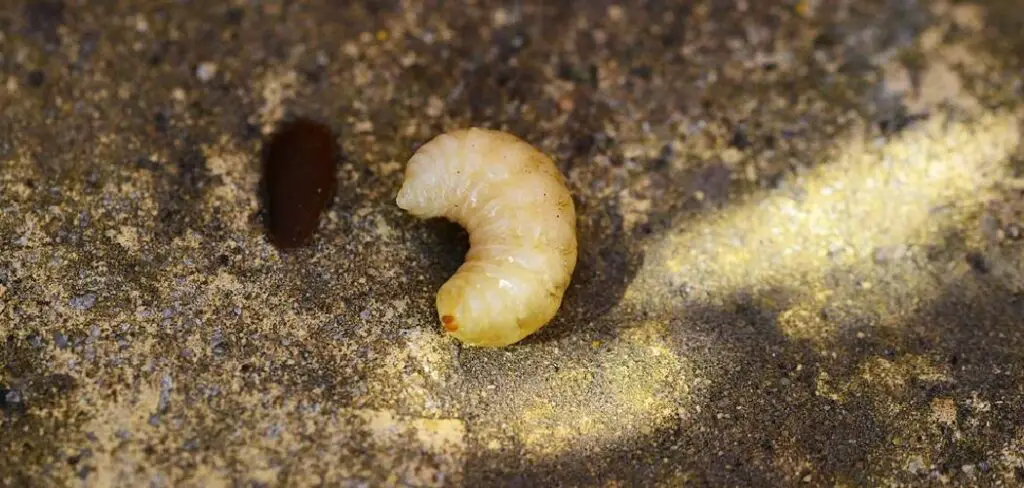
Understanding how to identify, prevent, and eliminate lawn grubs is key to maintaining a healthy, vibrant yard. In this article on how to get rid of lawn grubs, we will discuss different methods for grub control and prevention.
Signs of a Lawn Grub Infestation
Identifying a lawn grub infestation early is crucial to preventing extensive damage. One of the most common signs is the appearance of irregular brown or dead patches in your yard, which occur as grubs feast on the grass roots. You may also notice that your grass feels spongy when walked on, as the root system weakens and detaches from the soil. Another telltale indicator is an increase in animal activity, such as birds, raccoons, or skunks digging up sections of your lawn in search of these protein-rich larvae.
Additionally, if you pull up a section of your turf and it lifts away easily without resistance, it could signal that grubs have destroyed the underlying roots. Keeping an eye out for these signs can help you intervene before the infestation escalates.
When to Treat for Lawn Grubs?
The best time to treat for lawn grubs is in the late summer to early fall, usually from mid-August through October, when the grubs are small and close to the surface of the soil. During this period, they are actively feeding on the grass roots and are more vulnerable to treatment. If you notice signs of grub damage earlier in the year, such as in spring, it is still possible to treat, but the grubs may be larger and less susceptible to control measures.
Preventative treatments can also be applied in late spring or early summer to stop infestations before they begin, targeting newly hatched grubs before they cause significant damage. Timing is crucial, so monitoring your lawn for signs of grubs and their activity is key to effective treatment.
7 Simple Step-by-Step Guides on How to Get Rid of Lawn Grubs
Step 1: Identify the Type of Grub Infesting Your Lawn
The first step in effectively treating a grub infestation is identifying the specific type of grub present in your lawn. Grubs are the larvae of various beetles, such as Japanese beetles, June beetles, or chafer beetles, and each type may require slightly different treatment methods.
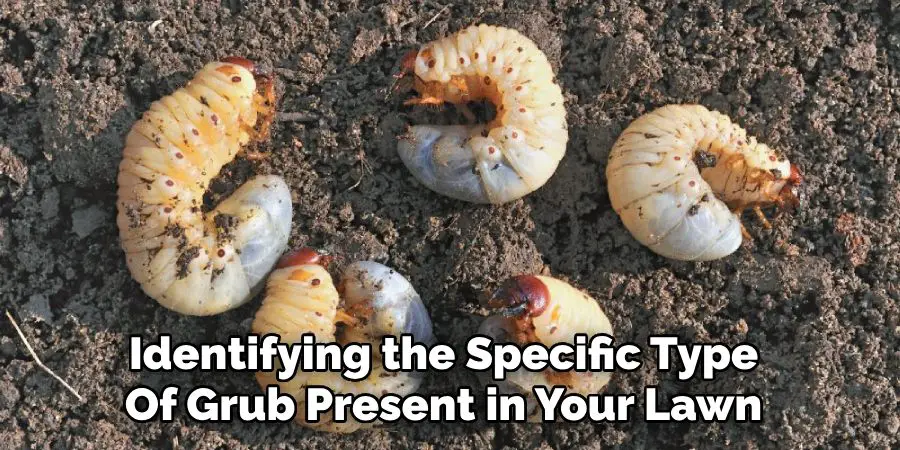
To identify them, dig a small section of your lawn—about 2-4 inches deep—in areas showing signs of damage, like thinning grass or brown patches. Examine the white, C-shaped larvae closely, paying attention to their size and any distinguishing features, such as the texture of their bodies or the patterns on their heads. Knowing the type of grub will help you choose the most effective control measures tailored to your lawn’s needs.
Step 2: Inspect Your Lawn for Signs of Grub Activity
Start by thoroughly examining your lawn for visible symptoms of grub damage. Common indicators include irregularly shaped brown patches, areas of grass that feel spongy underfoot, and turf that can be easily pulled up, revealing the soil beneath.
You may also notice increased activity from birds, raccoons, or other wildlife, as they dig up the lawn searching for grubs to eat. Identifying these signs early will provide insights into the severity of the infestation and help guide your treatment plan effectively.
Step 3: Use a Drench Test to Confirm Grub Presence
To confirm the presence of grubs in your lawn, perform a drench test. Start by mixing a solution of two tablespoons of dish soap with one gallon of water. Pour the mixture evenly over a one-square-foot area of your lawn where damage is suspected.
Wait for about 10-15 minutes and monitor the space closely—grubs will surface as a reaction to the soapy water. This simple test not only confirms their presence but also gives you an estimation of the infestation level, helping you determine the most appropriate course of action for control and treatment.
Step 4: Determine the Severity of Grub Infestation
Once the grubs have surfaced during the drench test, count the number of grubs in the one-square-foot area. This count helps gauge the severity of the infestation. For most lawns, discovering fewer than five grubs per square foot typically indicates a manageable level that may not require treatment.
However, if the number exceeds ten grubs, the infestation is severe and likely to cause significant damage to your lawn. Use these thresholds as a guide to decide whether intervention is necessary and to select the most effective treatment method for your specific situation.
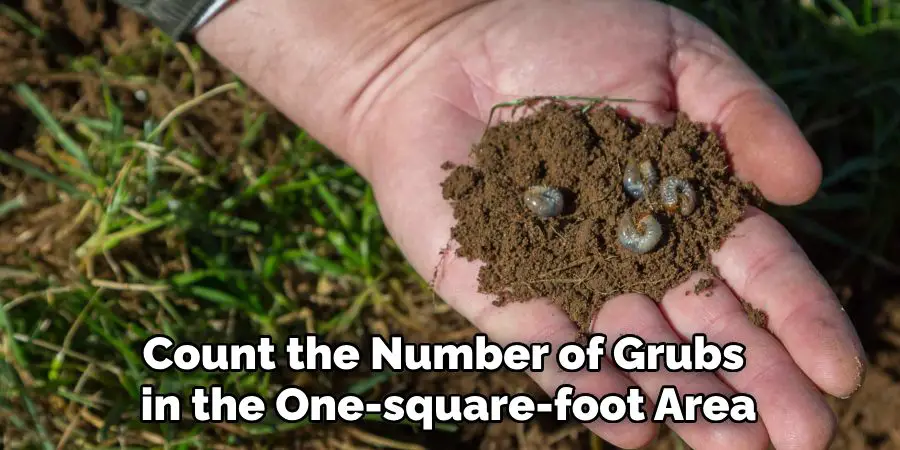
Step 5: Treat the Affected Area
Once you have determined that treatment is necessary, it is vital to choose the appropriate method to address the infestation. For chemical treatments, select a grub control product labeled for your specific type of lawn and follow the manufacturer’s instructions carefully. Apply the treatment evenly across the affected area, ensuring proper coverage.
Alternatively, for a more eco-friendly option, consider using beneficial nematodes—microscopic organisms that naturally target and eliminate grubs. Water the lawn thoroughly after applying either treatment, as this helps the solution penetrate the soil where the grubs reside. Consistent monitoring after treatment is critical to assess its effectiveness and decide whether additional action is needed.
Step 6: Prevent Future Infestations
Preventing future grub infestations requires proactive lawn care and maintenance. Start by keeping your lawn healthy through regular watering, mowing, and fertilizing, as strong, well-maintained grass can better resist pests. Overseeding thin areas can also help create a dense lawn that discourages adult beetles from laying eggs.
Additionally, consider introducing natural predators, such as birds, into your yard by providing bird feeders or water sources. Avoid overwatering your lawn, as excessively moist soil can attract beetles. Finally, routinely inspect your lawn for signs of grub activity, especially during peak beetle egg-laying seasons, and address any issues promptly to prevent a recurrence.
Step 7: Monitor for Further Signs of Infestation
Regular monitoring is essential to keep your lawn healthy and prevent future grub issues. Check your yard periodically for signs of damage, such as brown patches, thinning turf, or spongy areas, which could indicate grub activity. Pay special attention to previously affected areas, as they are more susceptible to reinfestation. Use a small spade to peel back sections of turf and inspect the soil for any visible grubs. Early detection allows for prompt action, which can save your lawn from extensive damage and help maintain a pest-free environment.
By following these steps on how to get rid of lawn grubs and regularly monitoring your lawn, you can effectively control grub infestations and keep your lawn healthy and beautiful.
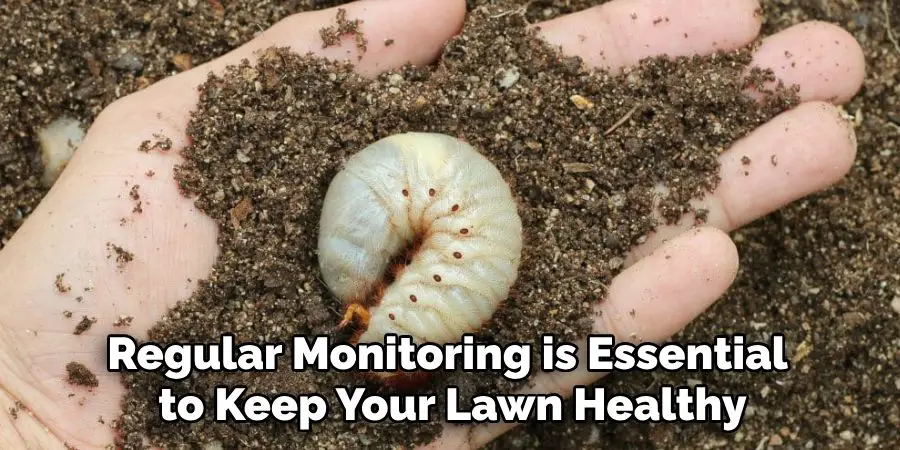
Safety and Environmental Considerations
When addressing lawn grub infestations, it is essential to consider both safety and environmental impact. Always read and follow the label instructions when using chemical treatments to ensure safe application and to minimize harm to beneficial insects, pets, and humans.
If possible, opt for eco-friendly solutions such as biological controls, like beneficial nematodes, which target grubs without negatively affecting other organisms. Additionally, avoid over-application of any treatment, as this can lead to runoff that contaminates nearby water sources. Prioritizing integrated pest management practices and adopting sustainable methods will help protect the environment while successfully managing grub infestations.
Frequently Asked Questions
Q1: How Can I Tell if My Lawn Has a Grub Infestation?
A1: Signs of grub infestation include brown patches or wilting grass, as well as an increase in wildlife activity such as birds and moles digging for grubs. You can also inspect your soil for the presence of grubs by digging up small sections of turf and counting the number of larvae.
Q2: How Do I Get Rid of Grubs Without Using Harmful Chemicals?
A2: There are several eco-friendly options for controlling grubs, including biological controls like beneficial nematodes, which target and kill grubs without harming other organisms. You can also introduce natural predators like birds, toads, and other insects that feed on grubs. Additionally, cultural practices such as proper lawn maintenance, including regular mowing and aerating, can help prevent grub infestations by promoting a healthy and balanced ecosystem in your yard.
Q3: How Can I Make My Lawn More Sustainable?
A3: One of the best ways to make your lawn more sustainable is by reducing or eliminating the use of chemical fertilizers and pesticides. Instead, opt for natural and organic alternatives that are safer for both your family and the environment. Another way to promote sustainability is by using native plant species in your landscaping, as they require less water and maintenance compared to non-native plants.
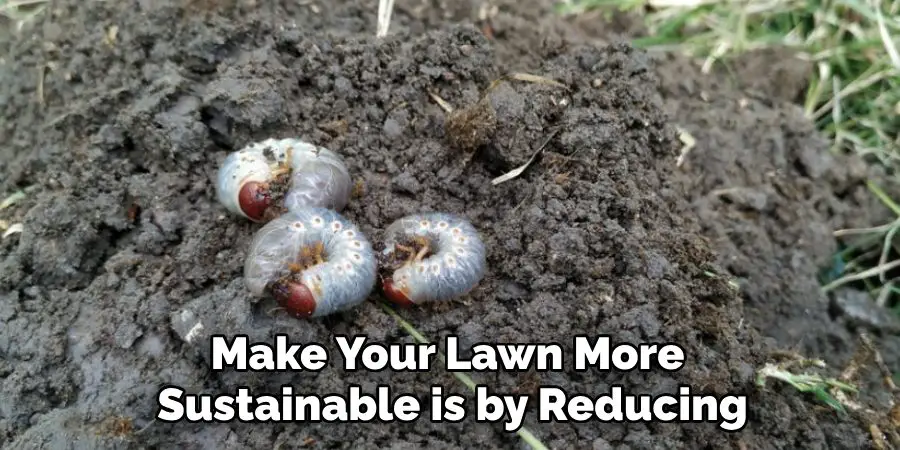
Conclusion
Creating a sustainable and eco-friendly lawn is not only beneficial for the environment but also contributes to the health and well-being of your family and the local ecosystem.
By adopting practices such as reducing chemical usage, incorporating native plants, and focusing on natural solutions, you can transform your yard into a thriving, balanced habitat. Small changes can make a big impact, and with consistent effort, you can enjoy a beautiful, sustainable lawn for years to come. Thanks for reading this article on how to get rid of lawn grubs.
